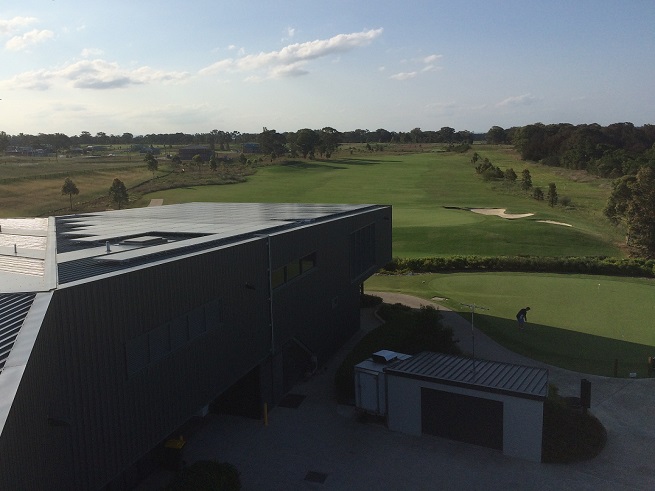U.S. has a record-breaking year for solar power
The U.S. solar industry installed 7,286 megawatts of solar power in 2015, according to data from GTM Research and the Solar Energy Industries Association (SEIA).
The figures, announced Monday, represent an increase of over 1,000 megawatts of solar photovoltaic installations compared to 2014. Photovoltaic technology is able to directly convert sunlight into electrical energy.
According to the data, solar beat natural gas capacity additions for the first time ever, with 29.5 percent of all new electric generating capacity met by solar power in 2015.
Rhone Resch, president and CEO of the SEIA, described 2015 as a “monumental year for the U.S. solar industry.” Resch added that the next few years would see, “solar continue to reach unprecedented heights as our nation makes a shift toward a carbon-free source of energy that also serves as an economic and job-creating engine.”
The potential of solar power as a clean energy source is significant. In 2014 the International Energy Agency stated that the sun could be the planet’s biggest source of electricity by 2050.
In the U.S., the Office of Energy Efficiency and Renewable Energy says that in states such as California, Hawaii, Texas and Minnesota, solar electricity is now “economically competitive with conventional energy sources.”
In regard to solar energy generation in Australia, the below information is quite insightful.
HOUSEHOLD AND COMMERCIAL RENEWABLE ENERGY
More than 1.4 million solar power systems had been installed in Australia at the end of 2014, along with more than 900,000 solar hot water systems. Just over 187,000 solar power systems were installed during 2014, a drop of 8.5 per cent on the year before. This figure is a little more than half the number of solar power installations during the peak installation year of 2011, when more than 358,000 systems were installed nationwide. However, the average system size has been growing as more businesses in particular recognize the benefits of going solar, and both households and businesses install progressively larger and more efficient systems.
State support schemes for solar have now been wound back, meaning people are focused on installing systems that cover the electricity they use themselves. While the overall number of installations was down slightly on 2013, the amount of solar generating capacity installed during 2014 was actually higher than the year before.
Bundaberg in Queensland was Australia’s solar power capital at the end of 2014, with the most solar power systems of any postcode in the country. Mandurah in Western Australia was second and Hervey Bay, just over 100 km away from Bundaberg, placed third. Eight of the top 10 solar regions of the year were from the aptly-named Sunshine State, with the remaining two from Western Australia.9 More than 15,000 businesses have now installed solar power, collectively saving approximately $64 million on their power bills each year.10 These businesses include retail stores, accommodation providers, fast food restaurants, chicken and dairy farms, breweries, wineries, office buildings and much more.
The Australian continent has the highest solar radiation per square meter of any continent and consequently some of the best solar energy resource in the world. The regions with the highest solar radiation are the desert regions in the northwest and center of the continent.
Australia receives an average of 58 million PJ of solar radiation per year, approximately 10 000 times larger than its total energy consumption. However, Australia’s current use of solar energy is low with solar energy accounting for only about 0.1 per cent of Australia’s total primary energy consumption. The most common use of solar energy is solar thermal water heating. Solar PV systems play an important role in off-grid electricity generation in remote areas.
